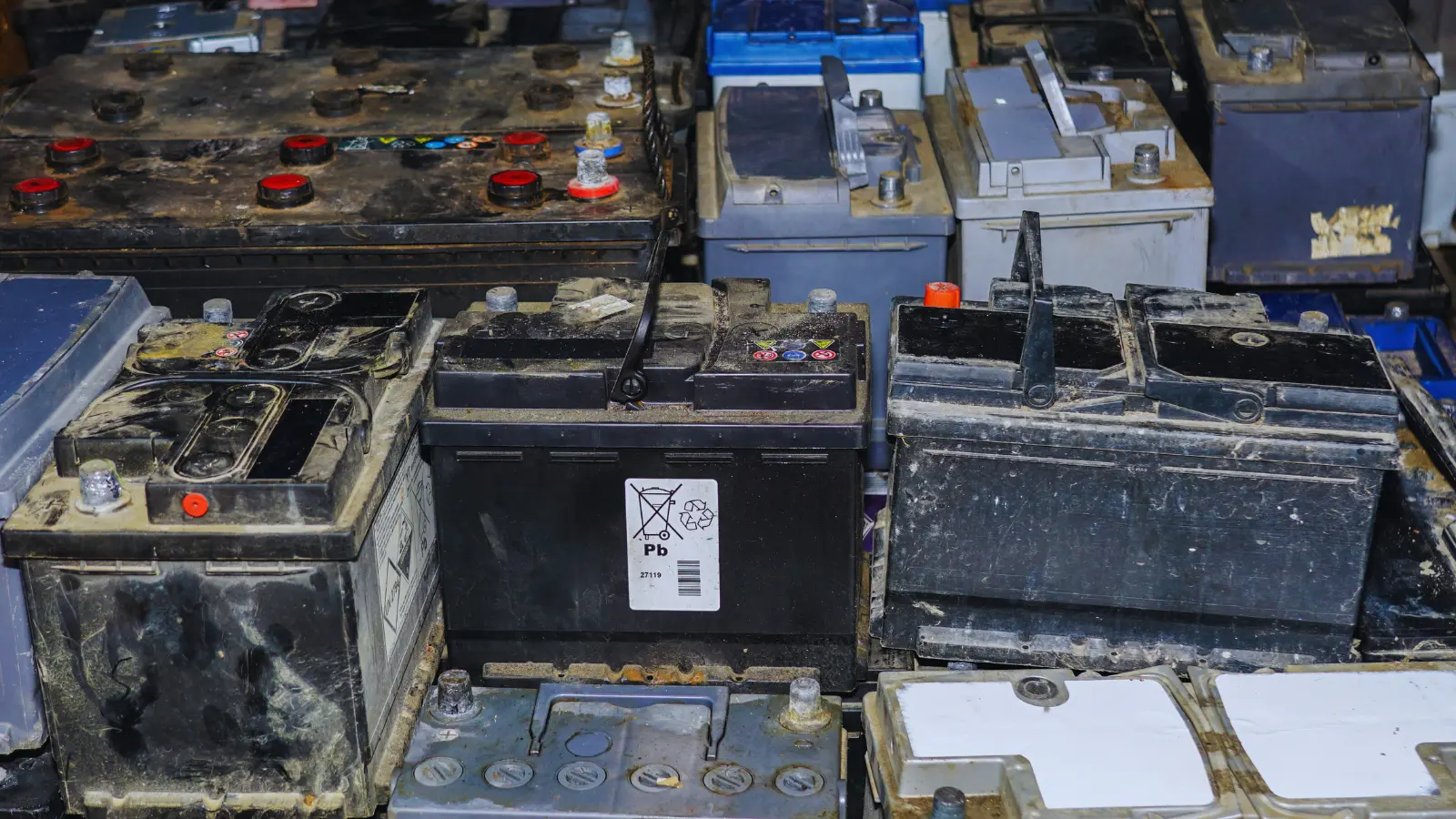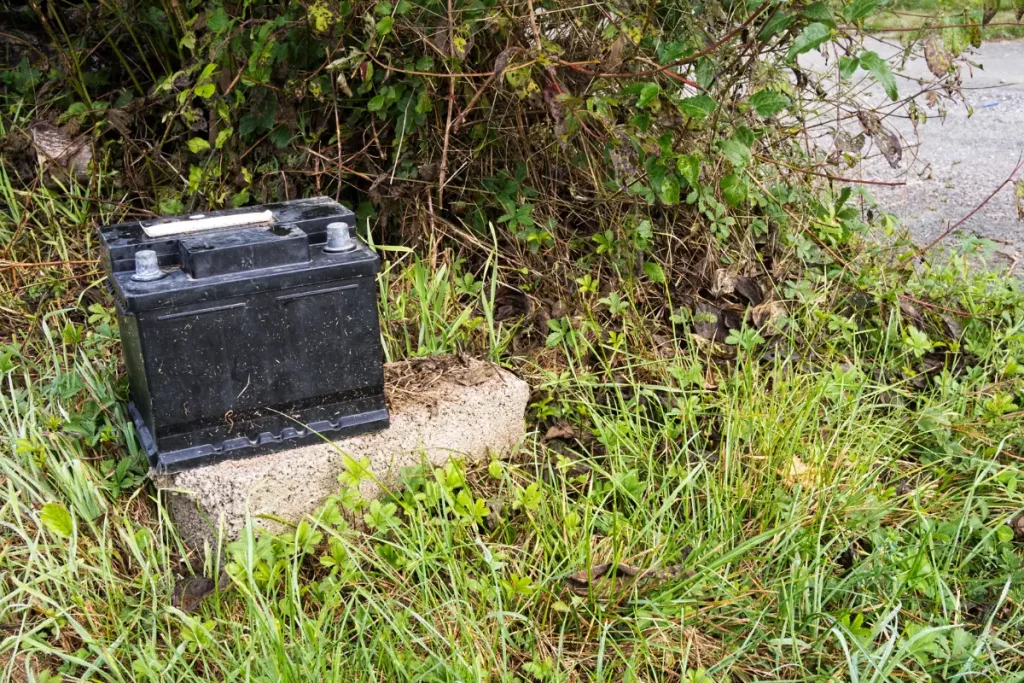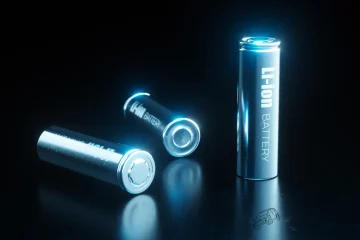This article is from the Automotivean website to learn the Hazard Class of Automotive Batteries.
Automotive batteries play a role in powering our vehicles.
It supplies the electricity necessary to start the engine, run the electrical systems, and keep the vehicle moving.
However, batteries are crucial for our cars, but they also cause some trouble that must learnt and handled rightly.
In hazardous materials classification, automotive batteries fall under a specific hazard class due to the possibly harmful substances they contain.
This full guide will delve into the hazard class of automotive batteries.
The risks they pose, and the importance of handling them safely.
Hazard Class of Automotive Batteries:
Automotive batteries categorized as hazardous materials for toxic and reactive components within them.
The US Department of Transportation (DOT) regulations say automotive batteries are Corrosive Substances as Hazard Class 8.
This classification based on the electrolyte solution found in batteries. Which usually forms of sulfuric acid.
Sulfuric acid is a highly corrosive substance. It can cause severe burns and tissue damage upon contact with the skin, eyes, or mucous membranes.
Also, sulfuric acid also has lead and other toxic heavy metals to humans and the environment.
Unfit handling or disposal of batteries can lead to soil, water sources, and air pollution. It posing severe health and environmental risks.
Risks Associated with Automotive Batteries:
The hazards attached to batteries stem from their corrosive, toxic, and reactive nature.
Batteries can leak electrolyte solution and sulfuric acid into the environment when damaged.
This can lead to chemical burns when anybody comes into contact with it.
Skin or eyes can cause environmental contamination if not seized properly.
Also, if exposed to humans or wildlife, these batteries’ lead and other heavy metals deliver long-term health risks.
Lead exposure can result in neurological harm, developmental delays, and other serious health problems. Making it crucial to handle and dispose of automotive batteries with care.
Besides these direct health hazards, batteries can also pose fire and blast risks.
Batteries can short-circuit when subjected to extreme temperatures or physical damage.
This leads to thermal runaway and potentially causing a fire or explosion.
This risk arises when batteries mishandled, improperly stored, or involved in accidents.
Safety Measures for Handling Automotive Batteries:
Given the hazards of automotive batteries, following proper safety measures when handling, storing, and disposing of them is essential.
Here are some key guidelines to ensure the safe handling of automotive batteries:
- Personal Protective Equipment (PPE): When working with batteries, always wear proper PPE like safety gloves, goggles, and clothing. It minimizes the risk of contact with corrosive substances.
- Avoid Physical Damage: Handle batteries carefully to prevent physical damage that could lead to leaks or short-circuiting.
Avoid dropping, crushing, or drilling batteries, and use proper tools and equipment for installation and removal.
- Ventilation: Work in well-ventilated areas when handling batteries to minimize exposure to harmful fumes and gases. Avoid working in enclosed spaces without proper airflow.
- Spill Response: In case of a battery leak or spill, immediately contain the area. Also, neutralize the spilt electrolyte with baking soda or another suitable absorbent material.
Wear proper PPE when cleaning and disposing of polluted materials following hazardous waste disposal guides.
- Storage and Transportation: Store automotive batteries in a cool, dry, well-ventilated area.
Always avoid heat sources, open flames, or other easily affected materials. When transporting batteries, secure them correctly to prevent shifting or damage during transit.
- Recycling and Disposal: Always recycle batteries at approved recycling facilities to ensure proper disposal and stop environmental pollution.
Never dispose of batteries in regular trash or landfill, as this can lead to toxic leachate and soil pollution.
Regulatory Compliance and Training:
To safely handle hazardous materials such as auto batteries, we need to follow relevant regulations and standards set forth by governmental authorities.
Organizations and individuals transporting, storing, and disposing of auto batteries must adhere to DOT rules, Environmental Protection Agency (EPA) guidelines, and other applicable laws.
Proper training and certification in hazardous materials should provided to workers with auto batteries.
To ensure they know the risks involved and equipped with the required knowledge and skills to handle batteries safely.
Training programs should cover hazard identification, crisis response processes, and exact PPE usage to mitigate risks.
Last word about Hazard Class of Automotive Batteries
In conclusion, automotive batteries classified as Hazard Class 8 – Corrosive Substances.
Due to the corrosive, toxic, and reactive nature of their contents. Sulfuric acid, lead, and other hazardous materials in batteries pose wellness and environmental risks if improperly handled.
Understanding the hazards of automotive batteries and following the recommended safety measures.
We can lower the risks and ensure the safe handling, storage, and disposal of these essential materials.
People and organizations working with automotive batteries must prioritize safety, regulatory compliance, and environmental duty.
Raising awareness about the hazard class of batteries and promoting best uses for their handling.
We can save human health, guard the environment, and boost the automotive industry’s viability.
Remember, safely handling auto batteries is not just a legal need.
Protecting ourselves, our communities, and future generations is a moral responsibility from the hazards posed by these vital, potentially dangerous pieces of our vehicles.
FAQs About Automotive Battery Hazard Classifications:
What hazard class is an automotive battery?
Automotive batteries are classified as Hazard Class 8 – Corrosive Substances.
This classification is based on the corrosive nature of the electrolyte solution found in batteries, typically sulfuric acid.
Due to toxic and reactive components like sulfuric acid, lead, and other heavy metals, automotive batteries are considered hazardous materials that require special handling and disposal procedures to minimize risks to human health and the environment.
What hazardous classification are batteries?
Batteries, including automotive batteries, fall under various hazardous classifications depending on their contents and potential risks.
In the case of automotive batteries, they are primarily classified as corrosive substances due to the presence of sulfuric acid in the electrolyte solution.
This classification is crucial as it signifies the corrosive, toxic, and reactive nature of the components within batteries.
And also highlighting the need for proper handling, storage, and disposal practices to prevent harm to individuals and the surrounding environment.
What is the hazard with car batteries?
Car batteries pose several hazards due to their corrosive, toxic, and reactive properties.
The primary hazard associated with car batteries is the risk of exposure to sulfuric acid.
Which can cause severe burns and tissue damage if it comes into contact with the skin, eyes, or mucous membranes.
In addition, automotive batteries contain lead and other heavy metals that are toxic to humans and the environment.
It also posing risks of long-term health effects and environmental contamination if not managed carefully.
Furthermore, car batteries can also present fire and explosion hazards when mishandled or damaged.
Physical damage to batteries can lead to leaks of electrolyte solution, which, combined with electrical short-circuiting, can result in thermal runaway and potentially cause fires or explosions.
Handling car batteries with caution, following safety protocols, and using appropriate personal protective equipment to minimize risks and ensure safe operations is essential.
In summary, the hazards associated with car batteries stem from their corrosive, toxic, and reactive component.
So highlight the importance of proper handling, storage, and disposal practices to prevent injuries, environmental pollution, and other adverse impacts.
By understanding the hazard class of automotive batteries and adhering to recommended safety guidelines, individuals and organizations.
This can mitigate risks effectively and contribute to a safer and more sustainable environment.




